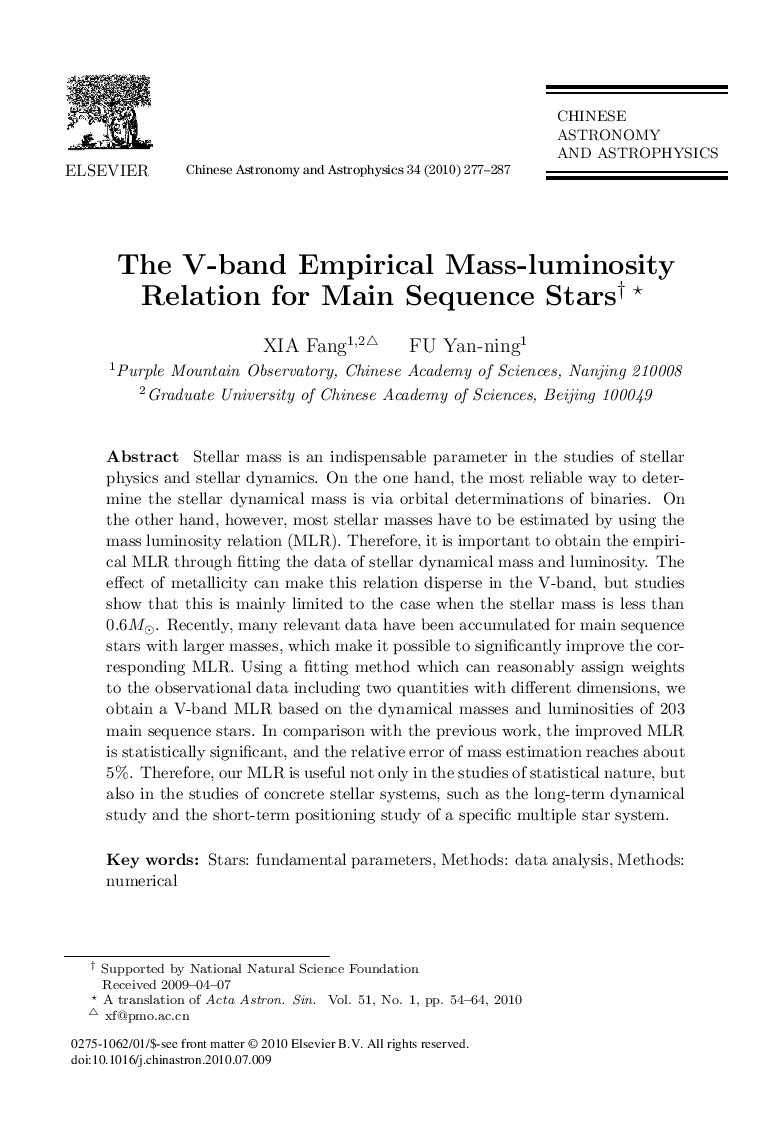| Article ID | Journal | Published Year | Pages | File Type |
|---|---|---|---|---|
| 1771834 | Chinese Astronomy and Astrophysics | 2010 | 11 Pages |
Stellar mass is an indispensable parameter in the studies of stellar physics and stellar dynamics. On the one hand, the most reliable way to determine the stellar dynamical mass is via orbital determinations of binaries. On the other hand, however, most stellar masses have to be estimated by using the mass luminosity relation (MLR). Therefore, it is important to obtain the empirical MLR through fitting the data of stellar dynamical mass and luminosity. The effect of metallicity can make this relation disperse in the V-band, but studies show that this is mainly limited to the case when the stellar mass is less than 0.6M⊙ Recently, many relevant data have been accumulated for main sequence stars with larger masses, which make it possible to significantly improve the corresponding MLR. Using a fitting method which can reasonably assign weights to the observational data including two quantities with different dimensions, we obtain a V-band MLR based on the dynamical masses and luminosities of 203 main sequence stars. In comparison with the previous work, the improved MLR is statistically significant, and the relative error of mass estimation reaches about 5%. Therefore, our MLR is useful not only in the studies of statistical nature, but also in the studies of concrete stellar systems, such as the long-term dynamical study and the short-term positioning study of a specific multiple star system.
